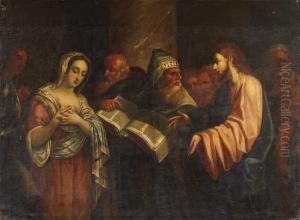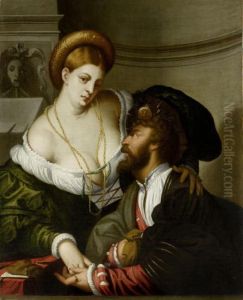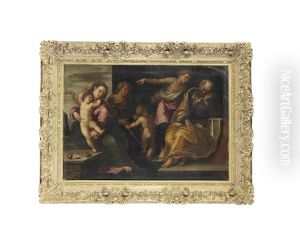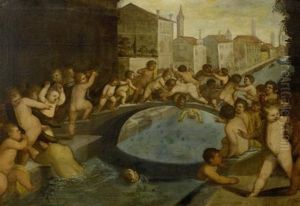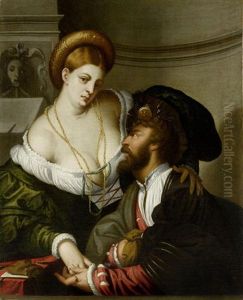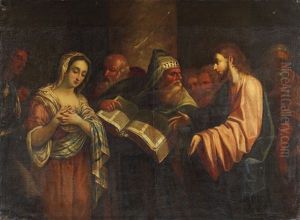Dario Varotari Paintings
Dario Varotari the Elder was an Italian painter, architect, and engraver born in 1539 in Verona, Italy, and passed away in 1596 in Padua. His work is often associated with the late Renaissance and Mannerist styles, reflecting the transitional period in European art where the High Renaissance's balanced and harmonious compositions began to give way to more complex and emotive forms characteristic of Mannerism. Varotari was deeply influenced by the Venetian school, especially by the works of Titian, whose style he sought to emulate in both his paintings and engravings.
Varotari's early life was marked by his move to Padua, where he would spend the majority of his career. In Padua, he became a prominent figure in the local art scene, contributing significantly to the city's cultural life through his work as both an artist and an architect. He was known for his religious and mythological scenes, characterized by their vibrant coloration and dynamic compositions. His architectural work, though less documented, also played a role in shaping the aesthetic landscape of Padua during the late 16th century.
Among his notable contributions to the art world was his mentorship of future artists, including his own son, Alessandro Varotari, who would also become a celebrated painter, known as Padovanino, in homage to his father's impactful career in Padua. Dario Varotari the Elder's legacy is not only in his own artworks but also in the influence he exerted on the next generation of artists, bridging the gap between the Renaissance and Baroque periods. Despite not being as widely recognized today as some of his contemporaries, Varotari's work continues to be studied for its contribution to the evolution of Italian art during a pivotal moment in its history.
